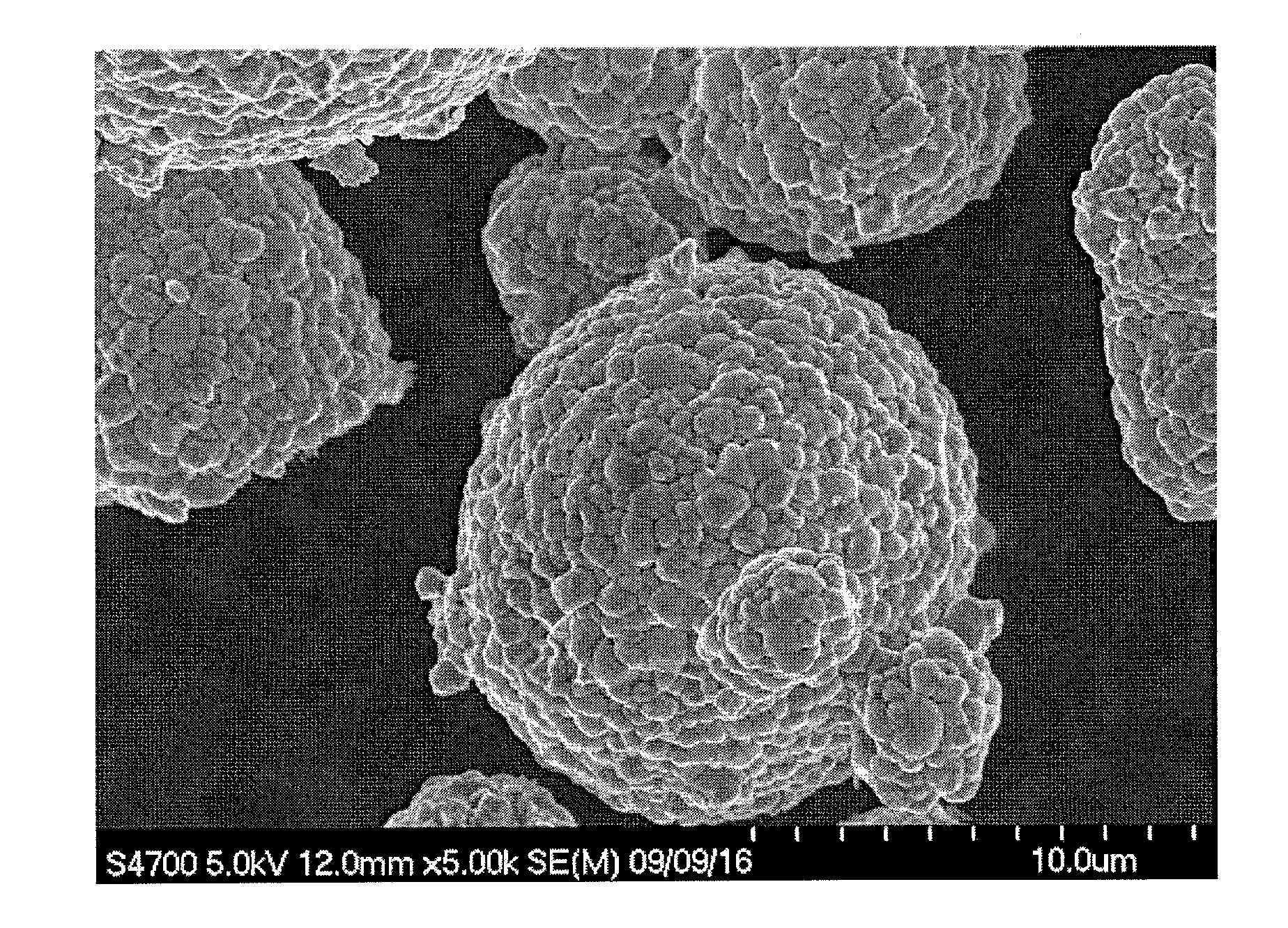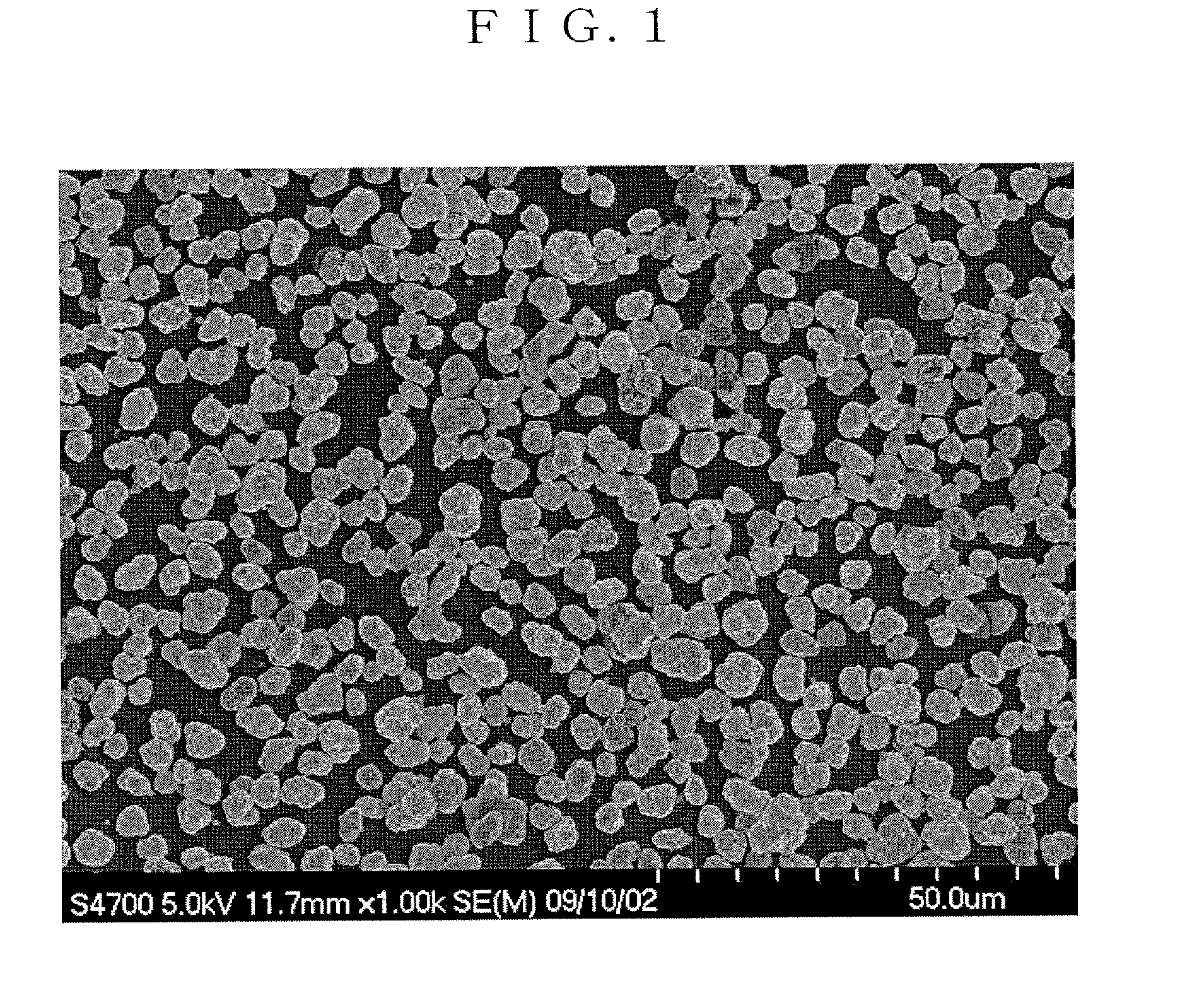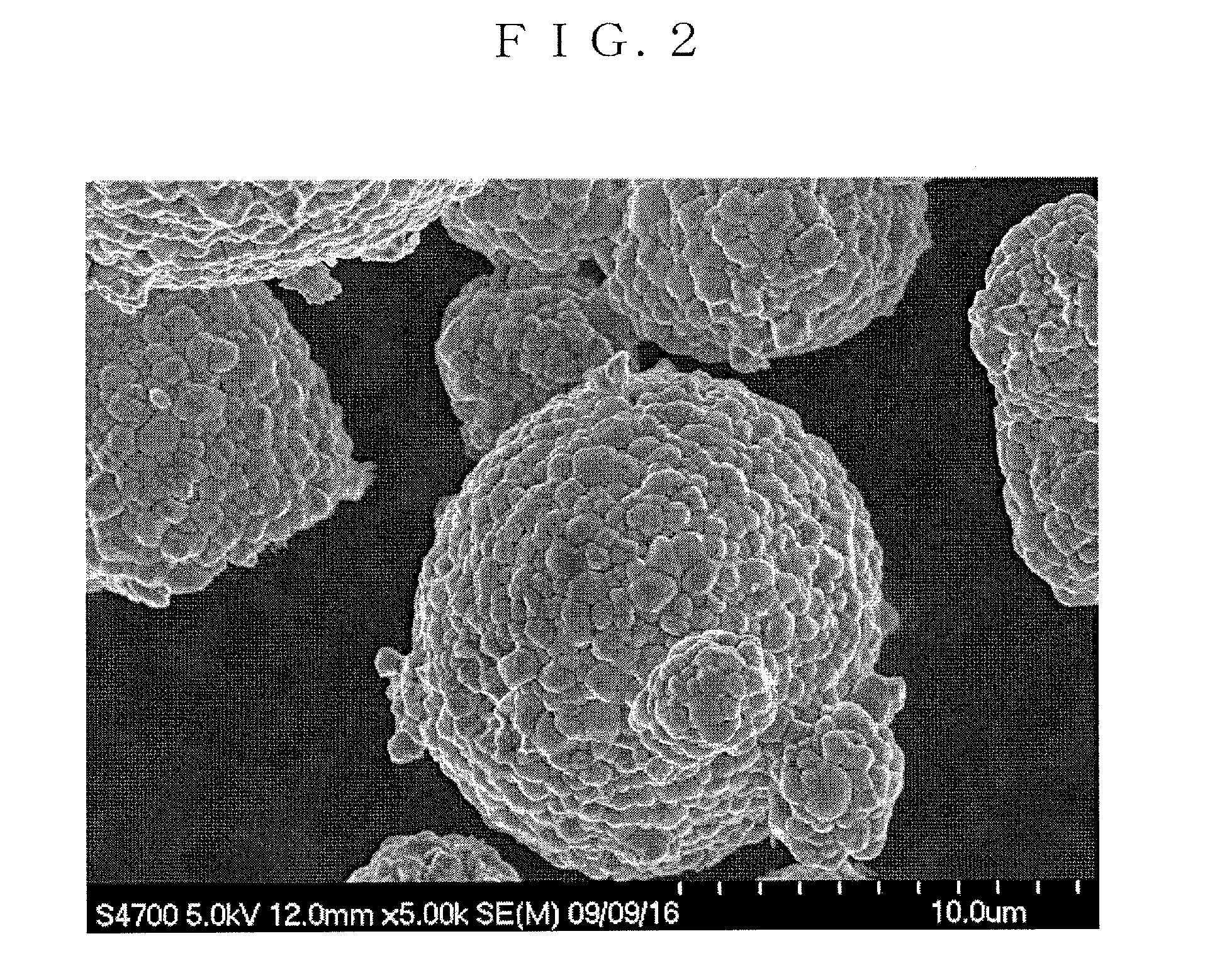Positive-electrode active material for nonaqueous electrolyte secondary battery and method for producing the same, and nonaqueous electrolyte secondary battery
a nonaqueous electrolyte secondary battery and positive-electrode active material technology, which is applied in the direction of cell components, transportation and packaging, and nickel compounds, can solve the problems of insufficient performance of the cathode active material described in patent literature 2, and inferior thermal stability of the advantaged lithium nickel composite oxide in a state of charge to the lithium cobalt composite oxide, etc., to achieve improved thermal stability, high capacity and output characteristics, and improved charge/discharge cycle stability
- Summary
- Abstract
- Description
- Claims
- Application Information
AI Technical Summary
Benefits of technology
Problems solved by technology
Method used
Image
Examples
example 1
[0207]A reaction chamber of 34 L was filled half full of water. Thereafter, while stirring the water, a temperature in the chamber was set to 40° C., and nitrogen gas was introduced into the reaction chamber to form a nitrogen atmosphere. At that time, a concentration of oxygen in the space of the reaction chamber was 2.0%.
[0208]A 25% aqueous sodium hydroxide solution and a 25% aqueous ammonia were appropriately added into water in the reaction chamber, and an aqueous solution before the reaction in the chamber was adjusted to have a pH of 12.2 in terms of the pH as measured at a liquid temperature of 25° C. as a standard. Additionally, an ammonia concentration in the aqueous solution before the reaction was adjusted to 15 g / L.
[0209]Next, nickel sulfate and cobalt sulfate were dissolved in water to form a 1.8 mol / L mixed aqueous solution. In this mixed aqueous solution, a molar ratio of each metal element was adjusted to be Ni:Co=0.745:0.14.
[0210]The mixed aqueous solution was added...
example 2
[0222]A cathode active material for a nonaqueous electrolyte secondary battery was obtained and evaluated in a similar manner to Example 1 except that the obtained lithium-containing composite oxide was introduced into pure water of 25° C. so as to be 1500 g / l and stirred for 30 min, thereafter was subjected to solid-liquid separation to be dried and recovered for obtaining the cathode active material.
example 3
[0223]A cathode active material for a nonaqueous electrolyte secondary battery was obtained and evaluated in a similar manner to Example 1 except that a mixed aqueous solution of metal salt was adjusted by dissolving nickel sulfate, cobalt sulfate and titanium sulfate such that a molar ratio of the metal elements of Ni:Co:Ti became 0.74:0.14:0.02 in crystallizing the composite hydroxide, an aqueous solution of sodium aluminate was added such that a ratio of Ni:Co:Al:Ti became 0.74:0.14:0.1:0.02 in neutralization, Al-compound coating was not carried out after the crystallization reaction, and a firing temperature was adjusted to 780° C.
PUM
| Property | Measurement | Unit |
|---|---|---|
| particle diameter | aaaaa | aaaaa |
| particle diameter | aaaaa | aaaaa |
| voltage | aaaaa | aaaaa |
Abstract
Description
Claims
Application Information
 Login to View More
Login to View More - R&D
- Intellectual Property
- Life Sciences
- Materials
- Tech Scout
- Unparalleled Data Quality
- Higher Quality Content
- 60% Fewer Hallucinations
Browse by: Latest US Patents, China's latest patents, Technical Efficacy Thesaurus, Application Domain, Technology Topic, Popular Technical Reports.
© 2025 PatSnap. All rights reserved.Legal|Privacy policy|Modern Slavery Act Transparency Statement|Sitemap|About US| Contact US: help@patsnap.com



